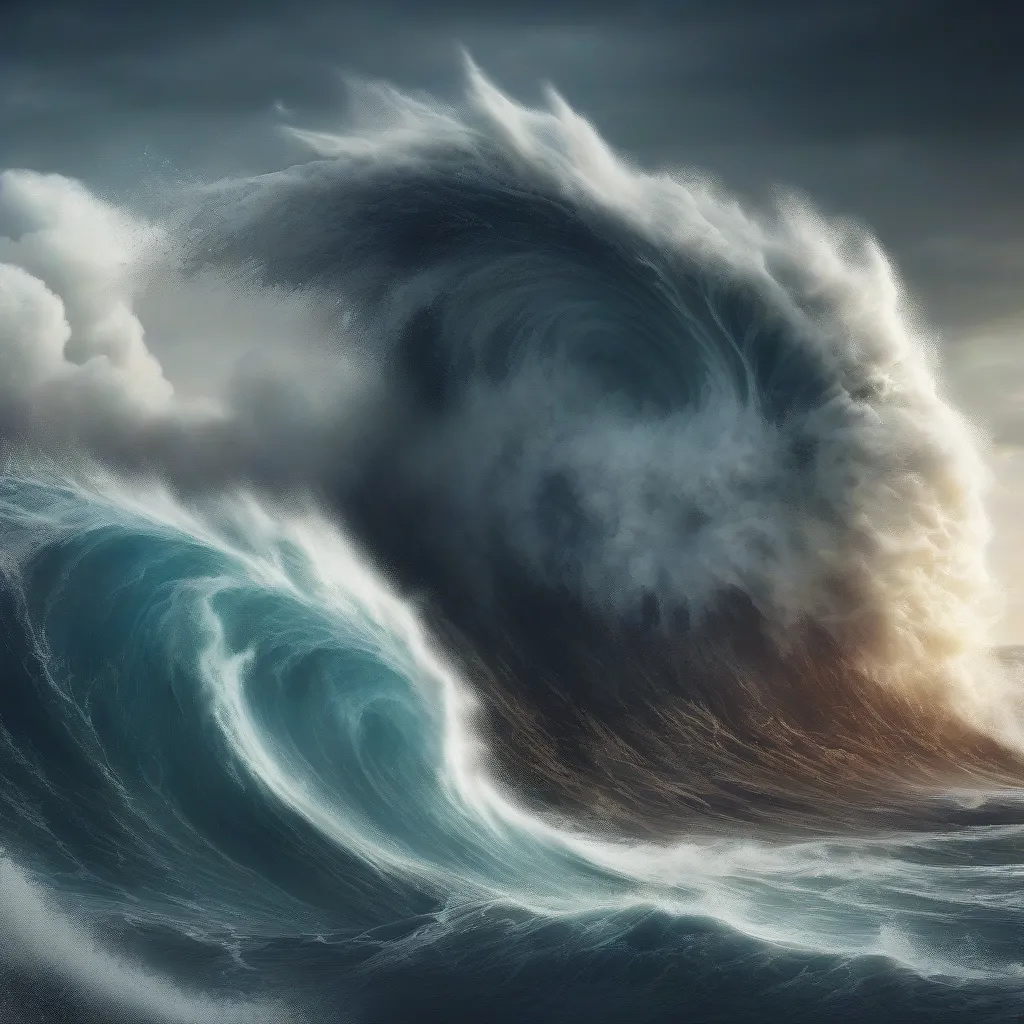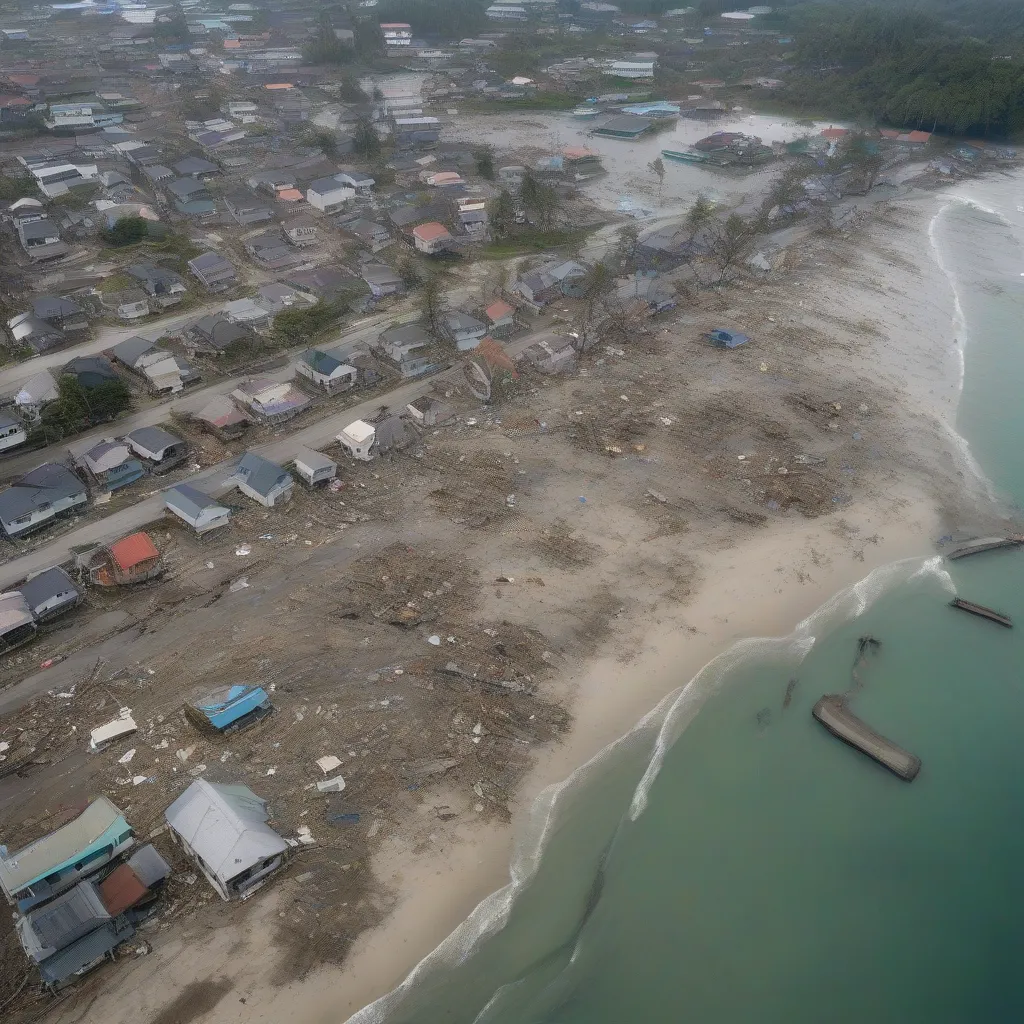Have you ever stood on a beach, feeling the sand between your toes and the ocean breeze on your face, and wondered about the raw power hidden beneath the waves? The ocean, while mesmerizing and beautiful, can unleash incredible forces, one of them being the terrifying tsunami. These monstrous waves, often triggered by earthquakes or underwater volcanic eruptions, can travel thousands of miles across the open ocean, and when they reach the shore, their impact can be devastating, reaching far beyond the coastline. But just How Far Can A Tsunami Travel On Land? Let’s dive into the science and stories behind these powerful events.
Understanding the Devastating Reach of a Tsunami
The distance a tsunami can travel inland, known as its “run-up,” depends on a complex interplay of factors:
The Tsunami’s Energy and Size
Not all tsunamis are created equal. The force of the initial disturbance, whether it’s a massive earthquake like the one that struck off the coast of Japan in 2011 or an underwater volcanic eruption like Krakatoa in 1883, dictates the energy injected into the wave. The larger the earthquake or eruption, the more potent the tsunami. A higher energy tsunami will inevitably surge further inland.
Coastal Topography
Imagine a gently sloping beach versus a steep cliff. The lay of the land plays a crucial role in determining how far a tsunami will intrude. Low-lying coastal areas, like those found in certain parts of Indonesia or Thailand, are particularly vulnerable as the tsunami can surge inland for miles. In contrast, a steep cliff face might act as a natural barrier, limiting the tsunami’s reach.
Natural Barriers
Nature itself can offer some protection. Dense forests, coral reefs, and even mangroves can act as natural buffers, absorbing some of the tsunami’s energy and reducing its impact further inland.
Man-Made Structures
Seawalls and levees, strategically built to protect coastal communities, can play a significant role in mitigating a tsunami’s destructive power. However, the effectiveness of these structures depends on their design and the force of the wave they encounter.
Historical Tsunamis: Tales of Destruction and Run-Up
Examining historical events can provide chilling examples of just how far a tsunami can travel inland:
2011 Tōhoku Earthquake and Tsunami, Japan: This devastating event saw tsunami waves reach up to 6 miles inland in some areas, highlighting the destructive power of a large-scale tsunami, especially in relatively flat coastal regions. The impact of this disaster led to increased investment in early warning systems and coastal defenses worldwide.
2004 Indian Ocean Tsunami: Triggered by a massive undersea earthquake, this tsunami wreaked havoc across the Indian Ocean, with waves reaching up to 1.86 miles inland in some places. The event tragically underscored the importance of a coordinated global response to such disasters.
1960 Valdivia Earthquake and Tsunami, Chile: The most powerful earthquake ever recorded (9.5 magnitude) generated a tsunami that traveled across the Pacific Ocean, causing significant damage in Chile, Hawaii, and even reaching the shores of Japan. This event highlighted the global reach and long-lasting impact of these natural disasters.
Planning Your Travels? Tsunami Awareness Matters
While these events can seem terrifying, remember that knowledge is power. If you’re planning a trip to a coastal region, especially one prone to seismic activity:
- Familiarize Yourself with Evacuation Routes: Knowing where to go in case of a tsunami warning can be lifesaving.
- Stay Informed: Pay attention to local news and weather alerts, and follow the guidance of local authorities.
- Seek Higher Ground: If you feel a strong earthquake or receive a tsunami warning, immediately move to higher ground, even if you don’t see the wave coming.
 Tsunami Approaching Coastline
Tsunami Approaching Coastline
FAQs: Answering Your Questions About Tsunami Travel
Can a tsunami travel up a river? Yes, the force of a tsunami can push water far inland, even traveling up rivers and streams, extending its reach significantly.
Are there any warning signs of an approaching tsunami? While not always present, a rapid and significant retreat of water from the shoreline can be a warning sign of an impending tsunami.
How can I help in the aftermath of a tsunami? Donations to reputable aid organizations are crucial. Check with organizations like the Red Cross or local relief efforts for ways to provide support.
 Devastation After Tsunami
Devastation After Tsunami
Explore More with Travelcar.edu.vn
Planning your next adventure? Whether you’re seeking serene beaches, vibrant cities, or off-the-beaten-path experiences, let TRAVELCAR.edu.vn be your guide. We offer insights into popular destinations, travel tips, and safety advice to ensure your journeys are memorable for all the right reasons. Discover the world with us, one destination at a time.
Remember, while the power of nature is awe-inspiring, understanding its potential risks allows us to travel smarter and safer.
